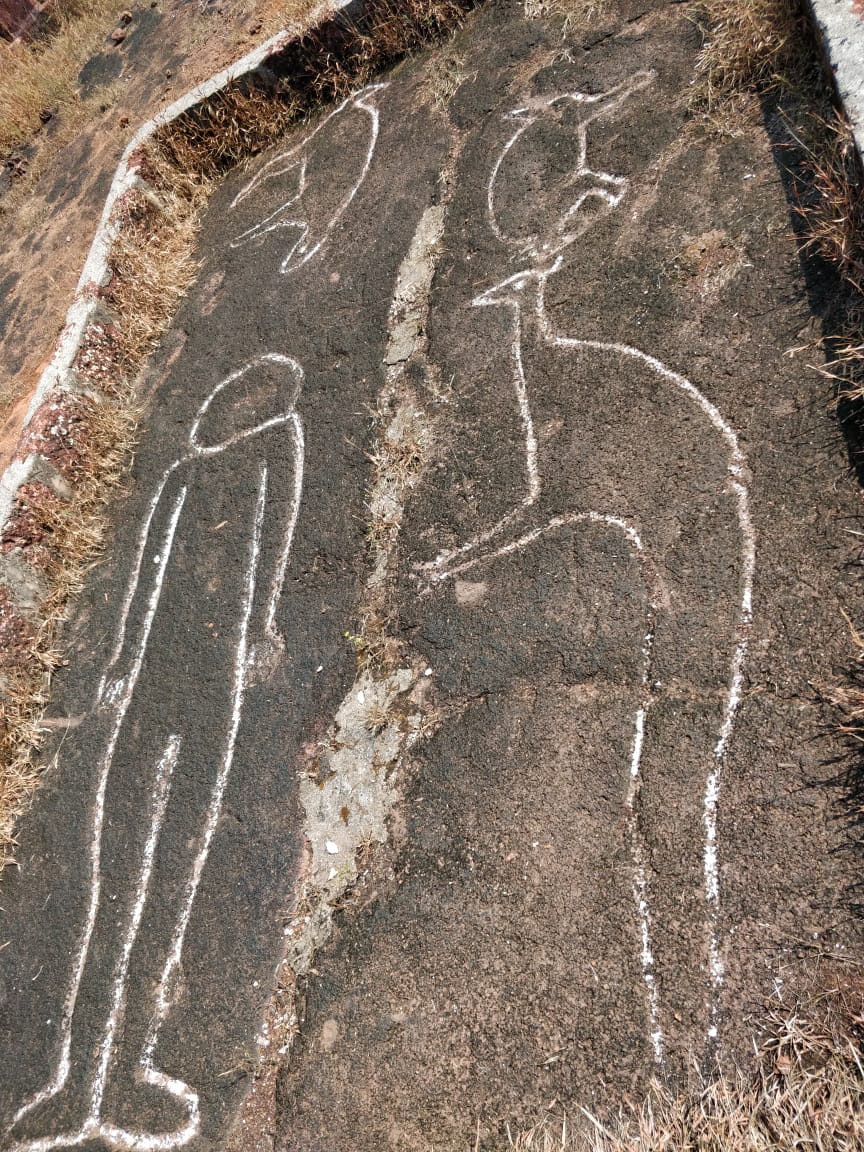Petroglyphs is a terribly difficult word for some of the most awesome rock carvings in the world. We’re talking not history here but pre-history. Ten thousand years to be precise. May be even older. This is the story of “once upon a time”. Time for the historical vini to turn hysterical. Look: these artists were around 5000 years before Mohenjo Daro and Harappa. If there’s one word to describe the experience of seeing such ancient carvings up-close it’s ‘amazing’.
It all began (ie. the modern day story) with a guy called Risbud and his friend Marathe who were working on highlighting the unusual aspects of the Konkan region. When they realised that there were many such carvings they started actively looking for more. The local dhangars (shepherds) know most about them. They are high up on rocky plateaus but some luckily for us are accessible by road. So accessible in fact that unfortunately the one at nivali got swallowed up to 40% during road widening, till the locals protested.
They are scattered along the coastline. The ones near Malgund i.e. those to the North are more primitive with no finding of any signs of habitation. The petroglyphs to the South near Rajapur are apparently more sophisticated. The archeologists have even found caves and evidence of stone tools. In fact, the tools also help to date the petroglyphs. Surprisingly, none of the carvings depict hunting or for that matter, daily activities. But since gynaecology is the most important branch of medicine there’s actually a carving of a pregnant woman who’s probably delivering. More proof of obstetrics being the oldest profession in the world.
The carvings come in many types. Human beings, animals, birds and geometric abstract art. Is it a script? Unlikely. Because written language came into existence much later. Some are best seen from a slight height: about 5 to 10 feet above ground. But many show groups of diverse images bunched together on one rock patch. For instance, the one at Ram road shows a human being, a peacock, a wild cat and a deer on a rectangular rock face. It’s almost as if the artist was hard up for space. He’s used up the entire space of the rectangular rock face with the various characters/ creatures at different ninety degree angles to each other. Or maybe there were multiple artists: each one filling up his or her share of a square portion of the blackboard. Even the geometric patterns at Nivali are in rectangular panels. Was it a rocky Rangoli competition?
More details later.
Petroglyphs 1



